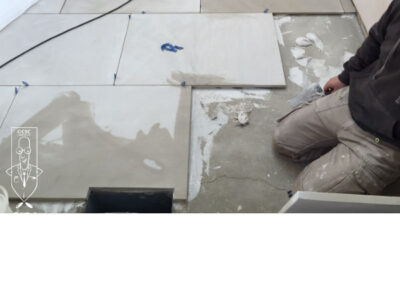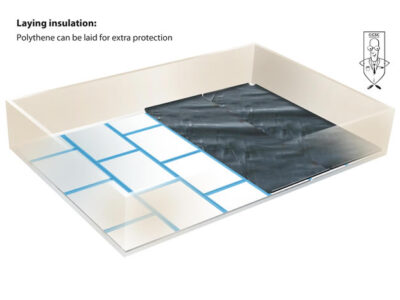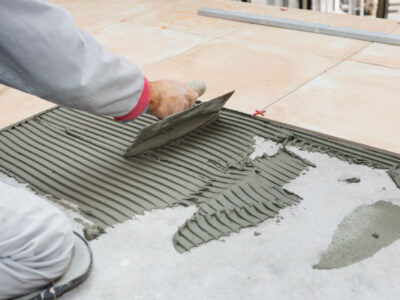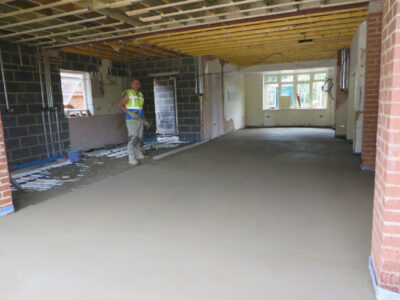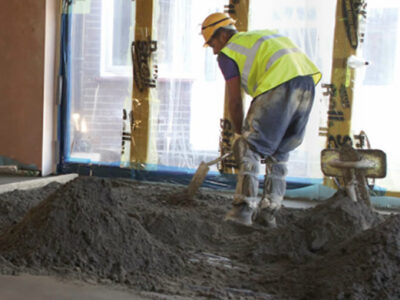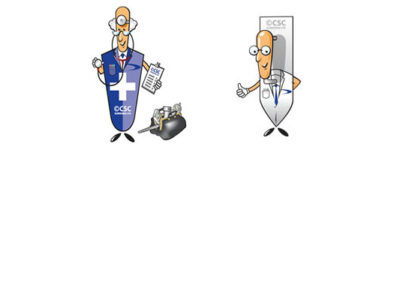Screed Protection Considerations
Protection to levelling floor screeds should be carried out as soon as possible after installation. This is especially true on large construction sites with where many tradespeople are potentially competing to access the available work areas. The expected traffic type and volume should be considered to determine the type of protection required. Instructions on heavy loadings...
Tiling onto Cracked Screed – Addressing Underlying Causes of Tile Floor Failure
Do you need to lay or are you worried about large format tiles placed directly over cracked screeds? Have you heard about crack inducement joints? Read on. As you can see large format tiles are being placed over cracks Not dealing correctly with cracked screeds is one of the main causes of tile floor failure. Keep...
Our 5 Most Popular Pages This Month
The Screed Scientist website is great for expanding your screeding knowledge. And this month nearly 6000 visitors used it to help them with their projects. Some of our most popular articles have been related to Underfloor heating with many of our readers looking for detailed information on how to make sure that their underfloor...
Preventing sulphate attacks on anhydrite screeds
Anhydrite/gypsum based screeds are popular for their free-flowing and self-levelling properties as well as ease of installation. They differ from traditional screeds in that they use a calcium sulphate binder instead of Portland cement in the screed mix. The calcium sulphate based binders allow the screed to be laid to a lower thickness than...
5 Things you need to know about your screed before refurbishing your floors
Once your old floors are stripped of their floor covering, it is important to make a thorough assessment of the remaining substrate to make sure it is in a suitable condition to take on the new flooring. Some of the basic aspects that need to be looked at before laying the new floor finish...
It's not Rocket Science Part 3
Our collaboration with Tomorrows Flooring to raise awareness in the floor screeding industry continues with the next instalment of the Screed Scientist content appearing in the September 2013 edition. See page 22 of this link: http://content.yudu.com/A2dukg/TFSept13/resources/index.htm?referrerUrl=http%3A%2F%2Fwww.tomorrowsflooring.com%2F The article covers: Right from verifying the suitability of the screed specification before commencing screeding to the post-installation measures of...
The Screeding Winter Checklist
The Screed Scientist® would like to offer some yuletide greetings and would wish that 2013 can become a prosperous year for our readers. We asked the Screed Doctor for his top tips to avoid winter floor screeding problems. Screed Scientist (SS): What is your top tip for the winter? Screed Doctor (Dr): Simple. Do not let your screed freeze! There...
How to Prepare the Floor Substrate for Levelling Screeds and Toppings
The key to the successful implementation of a bonded application is to achieve a good bond between the substrate and the applied bonding coat. Proper preparation is the most important factor for achieving a successful floor screeding installation. Whatever topping or levelling screed is used to achieve the definitive floor level, it will only...



